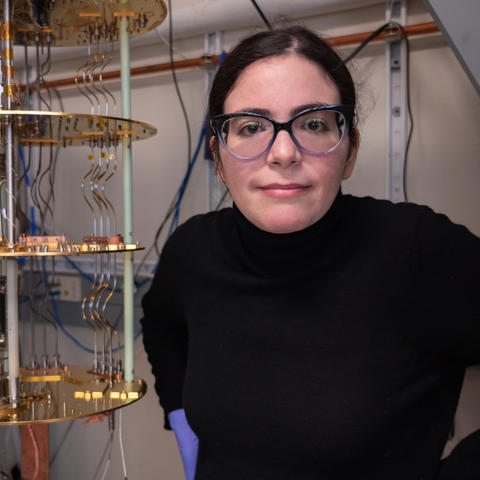
NIST researcher Samantha Walker builds time machines.
Not like in the movies, but her technology can help astronomers see the earliest light in our universe.
The leftover radiation from the Big Bang, known as cosmic microwave background (CMB), is all over the sky for astronomers to study. But those millimeter wavelengths and the very cold temperatures (about minus 270 degrees Celsius or minus 460 degrees Fahrenheit!) make it hard to see tiny fluctuations in this background.
Astronomers need cool tools that can see those tiny fluctuations. That’s where Sam, also a graduate student at the University of Colorado Boulder, comes in.
Sam learned about the CMB through two summer research projects at Stanford University while she was an undergraduate student at Fordham University. And she was hooked on building cool tools for astronomers.
Today, Sam and her NIST colleagues are developing low-temperature detectors that can help astronomers see these very faint signals. Later this year, many arrays of these low-temperature detectors will hit the sky at the Simons Observatory in the Atacama Desert, Chile. This will be the largest ground-based CMB observation experiment to date with 60,000 detectors.
We need to study the early universe to understand what’s happening in our world today, Sam says. We need to look at these early objects in the universe to learn everything we can about today’s version of the universe.
In the meantime, Sam is headed to Cornell University in the next step in her career. We know she’ll go beyond reaching for the stars. She’ll also build things to help us see the earliest versions of them.
Follow us on social media for more like this from all across NIST!

